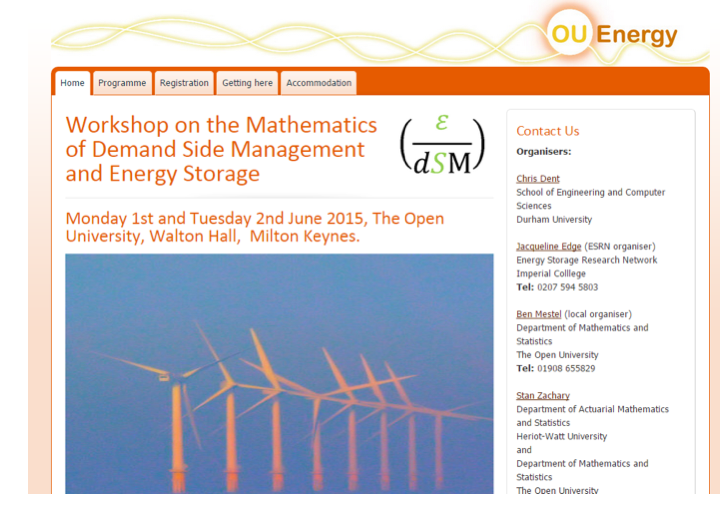I am an applied analyst, and my research field is nonlinear dynamical systems, in particular the theory of renormalization and its applications to mathematical physics. Renormalization is the theory that underlies universal metrical behaviour in critical phenomena such as the transition to chaotic dynamics.
Typically renormalization theory leads to functional equations and the study of these equations forms the backbone of my research work. In addition to research in nonlinear dynamical systems, I have an interest in the application of mathematics in energy systems and in the study of asset bubbles in financial systems.
Some further details of my research interests are given below.
Quasiperiodic renormalization
One of my principal interests is the application of renormalization techniques to the study of quasiperiodically driven systems, such as quantum systems and strange nonchaotic attractors. An early highlight of this research was the analysis of the so-called Ketoja-Satija orchid flower, a renormalization strange set, which governs the correlations of the fluctuations of the wave function for a generalized Harper equation with golden-mean frequency ratio. The SIAM orchid flower was used for the poster for the Snowbird meeting in 2007.

One exciting byproduct of this project has been the analysis by my former student Paul Verschueren of the so-called Sudler sine product for golden-mean rotation number. The product has application to diverse fields such as partition theory, Páde approximation & continued fractions, KAM theory and string theory, as well the renormalization theory of strange nonchaotic dynamical systems.
Renormalization in dynamical systems and the study of functional equations
Ever since the groundbreaking discovery of metric universality in
period-doubling cascades by Feigenbaum and others renormalization theory has been important in the study of critical transitions in nonlinear systems. The theory has been advanced by the interplay of numerical experiment and theoretical analysis, encompassing both heuristics and
rigorous proofs. Moreover, both computer-assisted proofs and traditional analytic methods have been
applied in this area.
A recent application in functional equations is the first-ever proof (computer assisted) of field growth for the stretch-fold-shear mechanism in kinematic dynamo theory, an important result for understanding planetary magnetic fields. This work was undertaken in collaboration with my PhD student Farhana Pramy and Andrew Gilbert of Exeter University.
Energy Research
Following my facilitation of Energy Systems Week at the Isaac Newton Institute for Mathematical Sciences in 2010, I have increasingly been involved in the application of mathematics in energy systems. As part of my work for the umbrella group OU Energy, I was the principal organiser of two meetings at the Open University on energy research. A further meeting, focussing on the mathematics of energy storage and demand side management, was held in June 2015. We were pleased that we brought together 76 participants, from academia, industry and professional organisations discuss this important topics for the energy system, in the UK and internationally. I was also on the organising committee for UK-Indian conference on energy held at the ICMS in Edinburgh in 2016, and was a participant in the Isaac Newton Institute Programme on the Mathematics of Energy Systems, January – May 2019.

In addition to mathematical analysis of storage to assist in the management of the energy systems, my joint work with PhD students Christian Cooke and George Matthew and with Open University colleagues on the mathematics of energy systems illustrates the effective use of numerical modelling to analyse complex systems, with potentially real social advantage. For example, a high-level model of the GB electricity grid has successfully reproduced the essential features of under-frequency events, most notably on 9 August 2019, thereby facilitating grid-stability studies under future energy scenarios. In a series of papers, System Dynamics modelling methodology has been applied to study the integration of renewable energy generation in the island of São Miguel in the Azores.